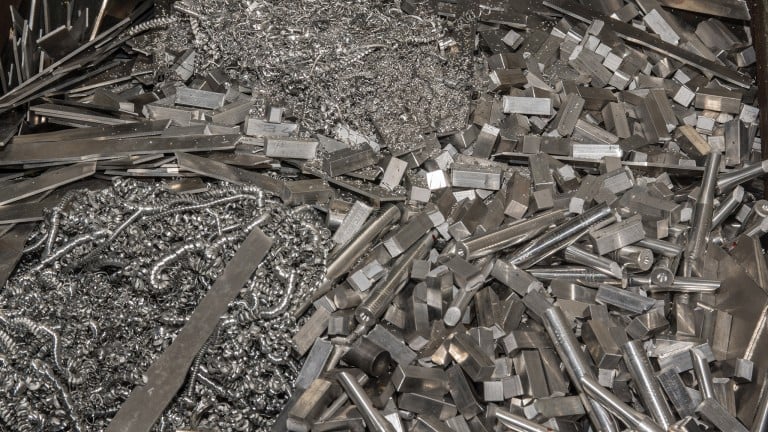A new survey from Ducker Carlisle concludes that aluminum use in construction is likely to grow by about 9 percent through 2027 compared to 2022 volumes. The report, “Building the Future: Trend of Aluminum Use in the US Construction Market,” published by the Aluminum Association, suggests annual shipments will increase by more than 200 million pounds through 2027. The report concludes that increased use in commercial buildings, as well as clean energy applications such as solar, will account for much of the growth in the coming years. Government infrastructure spending, including emissions reduction programs supported by the Inflation Reduction Act, is also expected to increase aluminum use in buildings.
For every $100,000 spent on residential and non-residential buildings, these market sectors use up to 58 kg and 81 kg of aluminum in construction, respectively. At the same time, 62 percent of construction professionals surveyed (including 79 percent of architects) expect their aluminum consumption to increase in the coming years. This group also expects aluminum to be the material with the highest increase in use among a dozen building materials in the coming years.
“The use of aluminum in buildings is increasing, in part due to the important role it plays in the energy transition,” said Paul Walker, chair of the Aluminum Association’s building and construction committee and business development manager for commercial building and construction, drawn tube and prefabricated components at Norsk Hydro. “The exciting news for us is that aluminum building products manufactured in the U.S. and Canada already have an average recycled content of more than 60 percent and have a lower carbon footprint than alternative materials.”
Findings from the report, which reflects data collected over a six-month period through interviews with architects and builders, include:
- In 2022, more than 60 percent of the 2.5 billion pounds of aluminum used in construction was in nonresidential construction.
- Extruded aluminum profiles account for the largest share of aluminum building products, mainly due to the high demand for aluminum window frames.
- The study identified commercial windows and cladding as the key drivers of market growth through 2027, followed by solar panels and commercial doors.
- Aluminum is taking market share from wood in fencing and masonry in commercial building siding due to aesthetic trends, durability and ease of installation. At the same time, aluminum is losing market share to vinyl and composite in some residential applications such as windows and siding, although this trend is likely to reverse.
- Both the residential and non-residential aluminum markets are expected to recover in the coming years as housing starts, commercial construction and renovation activities pick up. Expected interest rate cuts, falling inflation and population growth are also expected to boost demand.
- The majority of architects and builders prefer aluminum due to its light weight, durability and ability to meet compliance regulations.
- Construction experts surveyed ranked aluminum as the third most popular material in the market among 12 materials (ahead of vinyl, steel, wood and others).
“Ducker Carlisle surveyed 250 industry experts – including 200 architects and contractors – about their preferred building materials,” said Rhett Bender, senior engagement manager for global building and construction practice specialist at Ducker Carlisle. “We heard time and time again that aluminum use will increase over the next three years because aluminum is lightweight, durable, sustainable and corrosion-resistant.”
According to the Aluminum Association, construction is the third-largest market for North American aluminum producers after transportation and packaging. The segment represents about 13 percent of total shipments in the region. Non-residential (commercial) applications account for nearly two-thirds of all aluminum used in construction. Key submarkets include aluminum extrusions used in residential and non-residential windows and fences, entry and patio doors, and aluminum sheet used in building siding and gutters. Aluminum is also increasingly used as part of solar panels on buildings.
Governments are placing emphasis on energy efficiency through regulation, incentives, updated building codes and enforcement. The built environment is responsible for 42 percent of global carbon emissions, 27 percent of which are attributable to building operations such as heating and lighting. Building with aluminum materials helps construction projects achieve green building status under Leadership in Energy and Environmental Design (LEED) standards by providing insulation, allowing for more daylight and air circulation, and reflecting up to 95 percent of incoming solar energy, dramatically improving energy efficiency.
Aluminum plays a key role in sustainable construction as companies look for strong, durable, recyclable, and health and environmentally friendly options. Domestically produced aluminum and aluminum products are about half as carbon intensive as aluminum products from the rest of the world. Aluminum products made in China are, on average, 2.5 times more carbon intensive than North American aluminum. Even if the global aluminum industry commits to drastic emissions reduction measures, it would still take 8 to 10 years for the rest of the world to be able to produce semi-finished aluminum products with the same carbon intensity as North America today.

